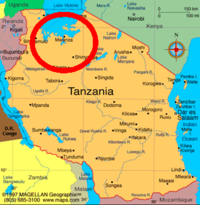Map Babylonian Empire
The Babylonian Empire was one of the most significant civilizations of the ancient world, spanning from the 19th to the 6th century BCE. Located in modern-day Iraq, the Babylonian Empire was known for its advanced culture, impressive architecture, and monumental achievements in science and mathematics. The Map of the Babylonian Empire is an important tool for understanding the extent and power of this ancient civilization.
The Babylonian Empire was founded by the Amorites, who conquered the city of Babylon in the 19th century BCE. The empire reached its peak under the rule of King Hammurabi, who reigned from 1792 to 1750 BCE. Hammurabi is best known for his law code, a comprehensive set of laws that established the first written legal system in human history. The law code reflected the egalitarian ideals of Hammurabi's time and is considered a significant contribution to the development of modern law.
The Map of the Babylonian Empire depicts the vast territory that was under the rule of the empire at its height. The empire extended from modern-day Kuwait in the east to the Mediterranean Sea in the west, and from the Persian Gulf in the south to modern-day Turkey in the north. The map also shows the major cities of the empire, including Babylon, Nippur, and Sippar.
One of the most impressive achievements of the Babylonian Empire was its advanced system of irrigation, which allowed for the cultivation of crops in an otherwise arid region. The map shows the major rivers and canals that were used for irrigation, including the Tigris and Euphrates rivers, which continue to be important sources of water in the region today.
The Babylonian Empire was also known for its impressive architecture, including the famous Hanging Gardens of Babylon, which were considered one of the Seven Wonders of the Ancient World. The map shows the location of the gardens, which were believed to have been built by King Nebuchadnezzar II in the 6th century BCE.
The Babylonian Empire was a major center of learning and scholarship in the ancient world, with significant contributions in mathematics, astronomy, and medicine. The map shows the major centers of learning, including the Library of Ashurbanipal in Nineveh, which contained tens of thousands of cuneiform tablets with information on a wide range of topics.
The Map of the Babylonian Empire is an important tool for understanding the extent and power of this ancient civilization. The map shows the vast territory that was under the rule of the empire, as well as its major cities, rivers, and canals. It also highlights the impressive achievements of the Babylonian Empire in irrigation, architecture, and scholarship. By studying this map, we can gain a deeper appreciation for the legacy of this remarkable civilization and its enduring impact on human history.







